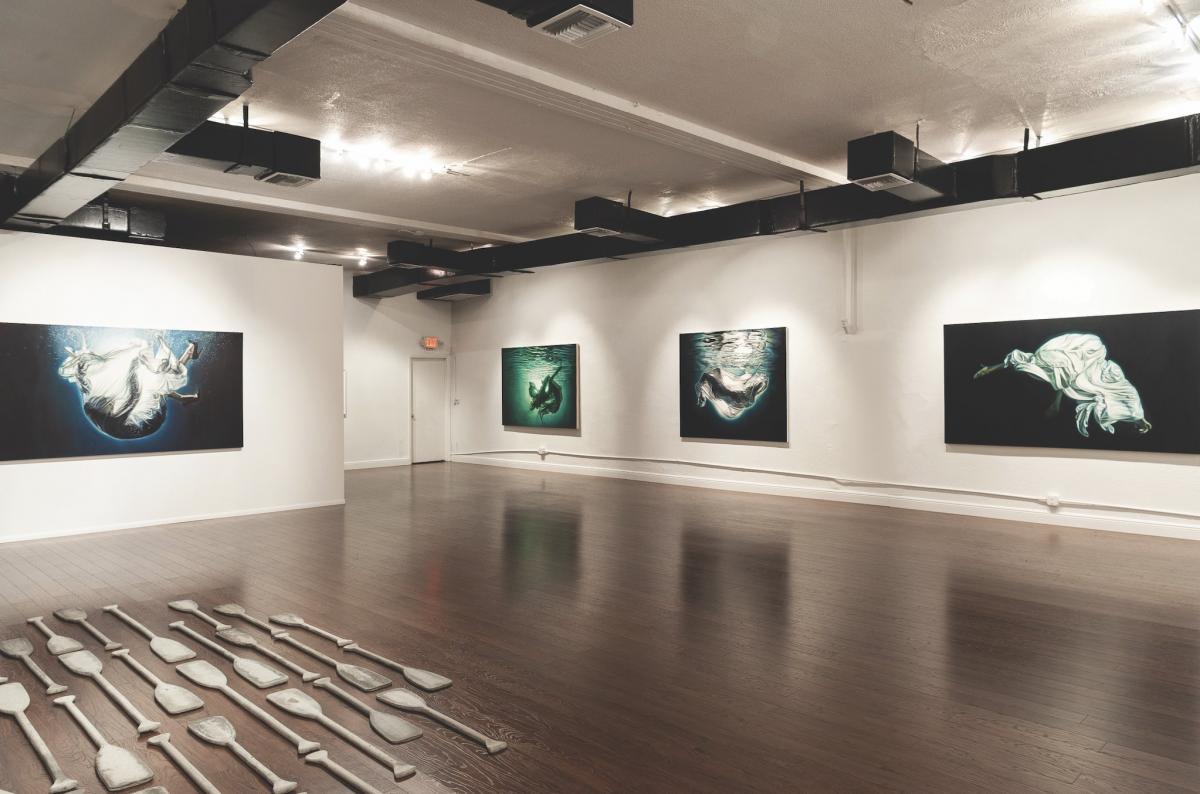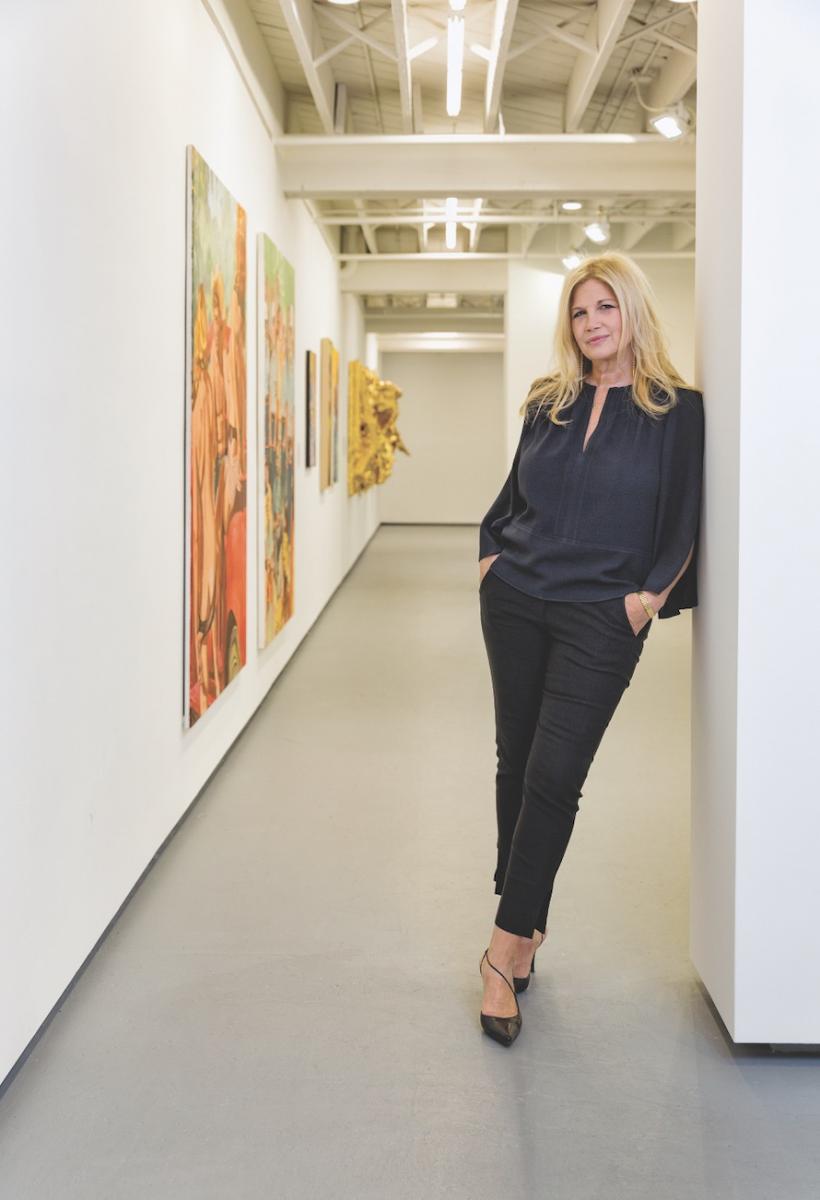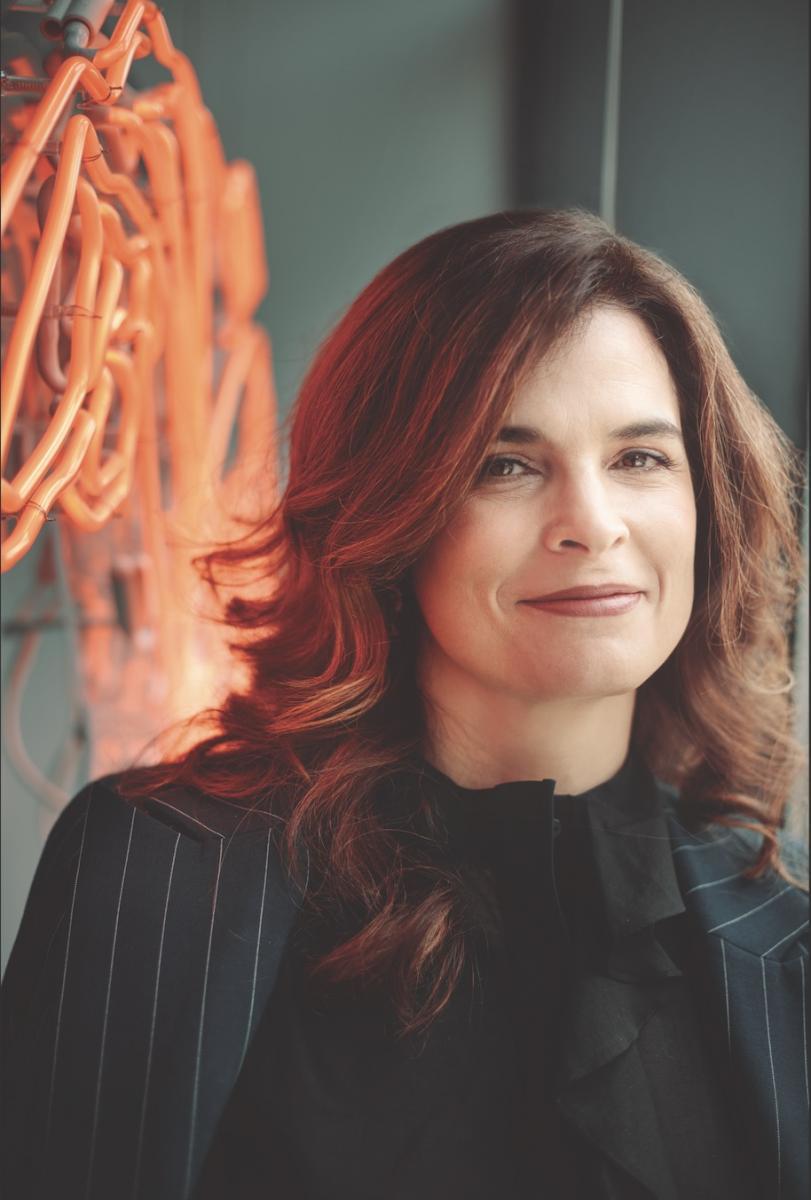Alumni Drive Innovations in How and Where We Experience Fine Art
By Mike Carlson
In late 2017, San Francisco art gallery owner Wendi Norris (MBA’96) closed her eponymous gallery after 15 years. The gallery, a large space in an enviable location near the San Francisco Museum of Modern Art, had held acclaimed exhibitions, published books, sold millions of dollars of art, and introduced scores of people to artists Norris loved.
However in 2014, Norris knew something was not right.
A self-proclaimed data junkie, Norris was troubled that less than 10 percent of her sales came from gallery exhibitions. The majority of her sales came from art fairs, client outreach, or referrals. A stationary location, it seemed to Norris, was no longer the way to expose fresh eyes to new artists. So Norris closed up shop.
“I had no misgivings about it,” she says. “I didn’t have all the answers, but I have not regretted it for a moment. I took about two to three years to think through all the various models and ways of working, given today’s industry, my location, where my artist roster is, and my client base. I was pretty confident.”
Norris is one of many pillars in the art world — gallerists, museum directors, and auctioneers — who are rethinking old paradigms in the art game to improve access to art, creating a win-win for artists and fans alike.
The Gallerist

Part of that rethinking of old paradigms includes using new technology, avoiding outdated social norms, and reading economic trends.
Every year the investment banking company UBS and Art Basel, the godfather of international art fairs, produce a report on the economics of the art world. According to their 2019 summary, the global art market experienced a 6 percent upswing last year, with an estimated $67.4 billion in total sales.
A deeper dive into the research reveals a top-heavy market, though. In 2018, fewer than 5 percent of dealers made up 50 percent of the sales. Despite the overall growth, 57 percent of art dealers saw their sales decline in 2018. This is the direction it has been trending the last few years, according to the Art Basel reports. The number of art pieces more than $10 million, and the patrons who can afford to buy them, is a rather shallow pool and one that cannot sustain a broad swath of art galleries. It was this thought that guided Norris to seek out deeper waters.
“I was looking at the numbers of people coming to exhibitions at galleries. Who were they? How many were new? It was effectively the same set of people,” says Norris. “The foot traffic was not growing. And I was in the most central of locations in San Francisco, in an incredibly cool space. Even with all the partnering and co-marketing my team was doing, it wasn’t bringing in additional people. To some degree, clients and collectors and art enthusiasts think a gallery will always be there so they may take you for granted.”
About four years ago, Norris began to think she would have to pivot her business. Norris had a number of clients who worked in real estate development. When the Amazon effect became palpable in San Francisco — the rampant vacancy of commercial retail spaces that cannot afford to compete with the online giant — Norris’ real estate developer clients began to offer their empty spaces to her on a temporary basis, as way to attract tenants and avoid vacancy-related vandalism and squatting. It just made sense.
If patrons would not come to the art, Norris would bring the art to the patrons. She reasoned that using a “pop-up” strategy would expose her artists to wider circles of incidental art viewers, ones who may not seek out art but will stop their walk to indulge in it. The ethereal nature of the exhibit also would give art fans a greater sense of urgency to view it or face their fear of missing out. Her first exhibition with this new nomadic model of display was in the Presidio, at the base of the Golden Gate Bridge. Over the weekend, scores of bike riders, dog walkers, and families with young children wandered through the exhibit. In other words, it was exactly what Norris was looking for: the kind of audience that never would have sought out her downtown gallery.
Since then, she has organized similar shows in Miami and Guadalajara, and she will soon open one in New York, which has a massive swath of unused retail spaces available.
Two of the spaces that hosted her exhibits booked tenants immediately after the show closed after lying fallow for months. The experience has been equally as fruitful for Norris and her artists. Sales have improved by 466 percent compared with the previous year, and sales to new art buyers also jumped dramatically.
Norris still maintains a permanent gallery in San Francisco, a 1,200-square-foot space with high ceilings, concrete floors, and a large front window that is dressed by a different artist every few months. It is equal part gallery and headquarters for her new business model. She has absolutely no regrets about shuttering her former space.
“My long-standing mission has been to make art as accessible as possible and connect as many people to art as possible,” she says. “That’s another motivation behind this peripatetic business model. We bring the exhibitions to new, strategically important communities versus waiting for people to come to me.”
The Auctioneer

At 275 years old, Sotheby’s auction house is not much younger than Britain’s oldest museum. In fact, when it comes to art education and public exposure, Sotheby’s may be a third foundation of the art world, along with museums and galleries.
“One of the most common misconceptions about our company is that it’s this walled garden where beautiful things are kept locked up,” says Gavin Meng (B’13), assistant vice president, product development manager at Sotheby’s in New York. “In reality, all the art that we sell is on public exhibition before each auction. You can come to our offices and see it in person or view the lots on our website or on our mobile app. Being surrounded by all of this incredible art on a daily basis makes Sotheby’s a fascinating place to work. Some pieces go from one private collection to another and are only available for public view for a few days before they disappear for decades.”
While Sotheby’s is steeped in Old World tradition, Meng is heading a team that is building a platform to bring the art auction into the digital age. The completely paperless experience will allow the user to participate in an auction from anywhere in the world, on a desktop or mobile interface.
Is the day coming when a Warhol will be purchased from an iPhone?
So far, Sotheby’s has used this new technology in two auctions. The first, held in February 2019, generated $5.2 million of total revenue, well above expectations. Seventy-four percent of the sold lots went for prices at or above their presale projections. Sotheby’s was happy, buyers were happy, and consigners were ecstatic with the increased exposure and more active bidding.
“We want to make art accessible, not just available to those who can visit us in New York or London. You should be able to experience art and learn about it in a compelling way wherever you are in the world, with the ability to then bid, buy, and pay for it on your terms,” says Meng. “We want to break down the barriers that have traditionally existed in the auction world where the bids in the room and on the phone are the only viable ones.”
Using leading-edge technology is not new for Sotheby’s. In 2017 it created a virtual reality experience where the user can fly through a 3D Salvador Dali painting. Last year it was nominated for three Webby Awards for original videos and was awarded one. Meng’s team is working on rolling out a mobile app that allows the user to “try on” a 2D version of a painting in their home. Called Augmented Reality Lot View, the tool means the user can use their smartphone to view how any flat art — paintings, drawings, photographs — would appear on their own wall, in its proper dimensions.
“It’s one thing to read that a painting is 48 inches by 70 inches, but it’s another to see it hanging on your wall and realize how big that is,” says Meng.
Meng’s ultimate mission is to make the auction experience more engaging, interesting, and transparent for both the buyer and spectator. That may be through virtual reality or some other technology. It also might come from exploiting the vast human resources of Sotheby’s.
“We work with some phenomenally intelligent people with such intricate knowledge of their fields,” Meng says. “We can continue using technology to improve how we share that knowledge and expertise.”
The Museum Director

When Ellen Salpeter (B’82) became the director of the Institute of Contemporary Art (ICA) in Miami in 2015, she brought with her decades of experience, first as executive director of alternative galleries in the 1990s and then as deputy director of external affairs for the Jewish Museum in New York.
“ICA made a commitment to free admission. Accessibility was important for us in a town that looked at art as a pastime, family activity, or date night,” Salpeter says. “But really, my goal wherever I have worked is to meet people where they are. If you have audiences that don’t frequent museums or know how to look at art, you make them comfortable, you make it accessible.”
Meeting people where they are, in regard to their relationship to art, can mean different things to different people. Salpeter tries to erase the image of the museum as a temple of high culture and make it more accessible for larger demographics.
For example, free admission allows visitors to pop into a museum for an hour, rather than the daunting task of blocking off half a day to see the whole space in an effort to get the most for their money. Salpeter helped establish family days at her museums, complete with stroller parking and plenty of ice cream. Friday nights might have a DJ and a signature cocktail to attract young couples. As she describes it, anything to engage and introduce the institution to different audience segments.
“You want people to feel an ownership aspect. I want people to say ‘I am going to my museum,’” she says. “You will have audiences that are partitioned — your cultural tourists, academic programs, and member programs, but what you want is for everyone to feel ownership of that community asset. You want them to feel like if a friend is in town, they are going to go to the museum.”
Salpeter recently stepped down from her role at the ICA and now is consulting for several projects in the art world, but her opinions about art and its accessibility to the masses have not changed.
“Art is for everyone, and art should be part of a quotidian existence,” she says. “I firmly believe that art and living artists need to be at discussions around community issues. Artists don’t always have the answers, but having them at the table will push others to think a little differently. It doesn’t mean artists will come up with pragmatic solutions, but they may generate new ways of approaching
the issues.” GB
Published in Georgetown Business magazine, Spring 2019
